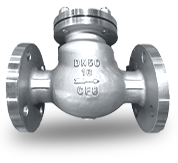Optimizing Flow Control with Advanced Trap Valve Technology and Applications
Understanding Trap Valves A Key Component in Industrial Applications
Trap valves, commonly referred to in the context of steam and fluid control, are essential devices utilized in various industrial applications. Their primary purpose is to manage the flow of fluids, ensuring efficiency and safety in operational systems. This article delves into the significance, functioning, and applications of trap valves in different industries.
What is a Trap Valve?
A trap valve is designed to allow the passage of certain fluids while preventing the escape of others. This characteristic is crucial in steam systems, where the valve serves to release condensate, air, and other non-condensable gases. The proper functioning of trap valves ensures that steam systems operate at optimum efficiency and prevents potential damages caused by the accumulation of condensate.
How Trap Valves Work
The operation of a trap valve is based on the principle of differential pressure. When steam condenses into water, it alters the pressure within the system. The trap valve is engineered to open when the pressure of the condensate exceeds a specific threshold, allowing it to drain away while simultaneously preventing steam from escaping. There are different types of trap valves, including mechanical, thermodynamic, and float types, each suited for specific applications based on operational conditions.
1. Mechanical Trap Valves These are typically activated by the physical movement of components, such as a float that rises and falls with the level of condensate. They are known for reliability and are often employed in various heating systems.
2. Thermodynamic Trap Valves These rely on the thermal properties of steam and water to function. They are generally compact and can efficiently handle high pressure, making them suitable for industrial environments.
3. Float Trap Valves Utilizing a buoyant mechanism, these trap valves maintain the water level and ensure consistent operation. They are widely used where continuous condensate removal is necessary.
trap valve

Importance of Trap Valves in Industries
Trap valves are vital in many sectors, including power generation, food processing, HVAC (heating, ventilation, and air conditioning), and chemical manufacturing. In power generation, they help optimize steam cycles, ensuring efficient electricity production. Similarly, in food processing, trap valves contribute to maintaining the quality and safety of steam heating processes, vital for sterilization and cooking.
In HVAC systems, trap valves facilitate the effective drainage of condensate, which is essential for maintaining temperature control and preventing damage to the equipment. The chemical manufacturing industry also relies on trap valves to manage the flow of liquids and gases, ensuring process efficiency and safety.
Maintenance and Troubleshooting
Regular maintenance of trap valves is crucial for ensuring their reliability and longevity. Common issues include clogging, which can occur due to impurities in the condensate, and improper sealing, leading to loss of steam. Routine inspections and timely replacements are necessary to prevent these complications.
It is also essential to understand the specific requirements of an application when choosing a trap valve. Different processes may require different types or sizes of valves, and consulting with an expert can lead to more efficient system performance.
Conclusion
Trap valves play an integral role in various industrial processes by controlling fluid dynamics and enhancing system efficiency. Understanding their function and significance can lead to better maintenance strategies and overall operational improvements. As industries evolve and demand higher efficiency, the importance of reliable trap valves continues to grow, solidifying their position as vital components in modern engineering applications.
-
The Key to Fluid Control: Exploring the Advantages of Ball Valves in Industrial SystemsNewsJul.09,2025
-
The Versatile World of 1, 2, and 3 Piece Ball ValvesNewsJul.09,2025
-
Stainless Steel Ball Valves: The Ideal Choice for Efficient Flow ControlNewsJul.09,2025
-
Optimizing Fluid Control with Ball Float ValvesNewsJul.09,2025
-
Manual Gate Valves: Essential for Control and EfficiencyNewsJul.09,2025
-
Everything You Need to Know About Butterfly ValvesNewsJul.09,2025
-
The Versatility of Wafer Type Butterfly ValvesNewsJul.08,2025




